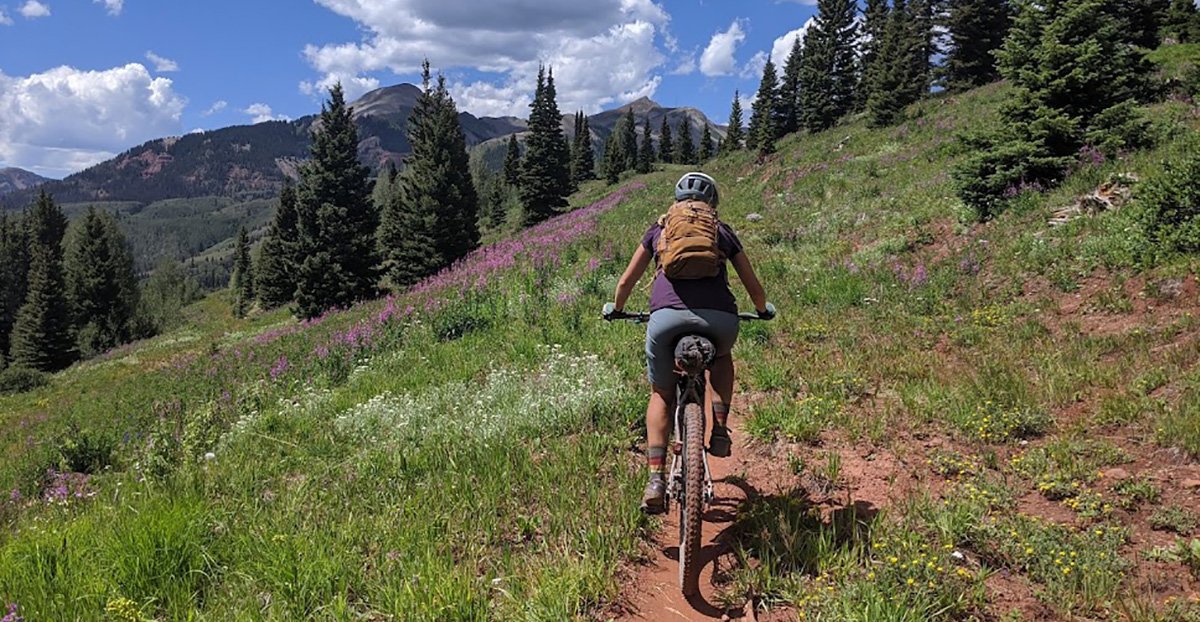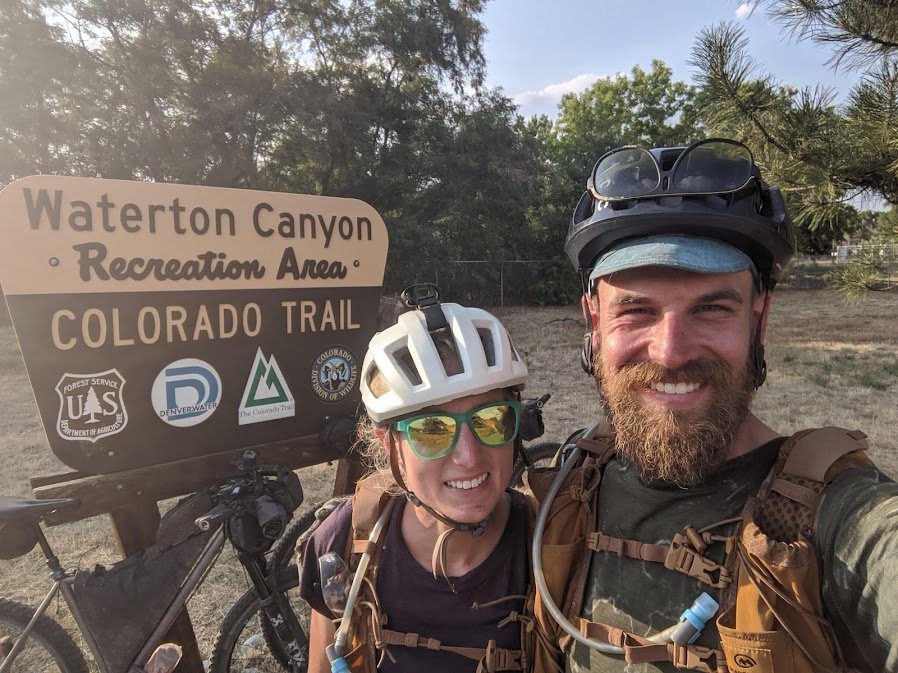Bikepacking for Experts: the “Yo-yo” Colorado Trail

September 8, 2021
Who doesn’t love bikepacking? The adventure of just you and your bike, out in the wilderness, discovering new places. For Katie and Andrew Strempke, this is a way of life. But with races and events being canceled due to the pandemic, they wanted to do something different. This is their story about being the first bikepackers to “yo-yo” the Colorado Trail — 539 miles each way, with some required hiking, in just 17 days on a single speed.
The Colorado Trail is considered a world-class long-distance trail and is one of the longest and most rewarding bikepacking routes in the U.S. It starts southwest of Denver and winds its way up to Durango, flowing through eight mountain ranges, six national forests and six wilderness areas. The trail rises and falls dramatically with steep and rocky climbs and dangerous descents. Bicycles are allowed on this hiking trail but are required to detour around each of the wilderness areas. The record on a bike is just under 4 days, but normally it takes 8 to 18 days to finish this trail — one way. “It’s for sure one of my favorite routes I’ve ever ridden. It’s really challenging, but it’s beautiful the whole time. That combination is really unique,” says Katie with a big smile on her face.
The Idea Comes to Life
Katie and her husband Andrew, who’s a former mechanical engineer at Garmin, love to take their bikepacking to the extreme. Take their ride across the U.S. from San Francisco to Yorktown, Virginia, for example, or the Great Divide Mountain Bike Route that leads from Canada to Mexico. This time they wanted to do something different. Even though some of their friends had to abandon their attempt to “yo-yo” the extreme Colorado Trail, they were inspired by the idea. “We were excited about it. Going up the trail, turn around at the end and doing the whole trail again in the opposite direction. No one had done this before, and this was the time for somebody to do it. We did some longer tours before, but the Colorado Trail is a single-track hiking trail that you’re allowed to ride bikes on, which makes it a lot slower going. But also more fun and much more engaging! The views are nonstop. You’re always looking out over mountain ranges; it’s breathtaking.”
They decided to go for it and even spiced it up by using a single speed instead of a geared bike. This might sound crazy, but they had some good reasons for it. “It’s lighter and that’s a big advantage, because you have to hike and carry your bike quite often on this trail. At least, that’s what we think, but most would disagree,” laughs Andrew. “We just like single speeds, and we used an easy and very light gear for this adventure, 32-22. Some steep parts might have been doable with a geared bike, but with a single speed you have to walk. Every time that you walk, it’s kind of a recovery because you’re moving your body differently. You’re not in the saddle all day long, you’re constantly on and off, which for a long ride really helps. It took us 17 days for the yo-yo, so it might have helped to avoid some injuries in the knees and the infamous saddle sores.”

Ready, Set, Let’s Go
The elevation on the Colorado Trail ranges from about 5,500’ up to 13,271’, so you can imagine it’s hard to exercise in thin air. That’s why they spent a few weeks in Colorado to get used to the altitude, but even then it was still very hard according to Andrew. “The times when you’re up near 12,000’ and the trail is steep, you’re just pushing your bike with very slow footsteps. Anything more than a slow walk gets you out of breath. You’re just slowly hiking with your bike, making steady progress — that’s what it’s all about. You just have to keep moving.”
They started at the same time in Denver but because Andrew was going faster in the beginning, they rode separately the first few days. And being the pioneers of this yo-yo race, they had to figure out what worked best. In order to make it to the finish, they decided to stick to their nutrition and rest plan: eat about 250 calories per hour and have at least 6 hours of sleep per night. When they were awake, they tried to move as much as possible. At most they stopped for 4 hours per day to eat or change clothes, but for the rest of the time they were moving.
Hard, Harder, Hardest
Because of the snowfall in that region, the trail is only open during the warmer months of the year. But even then you can expect a lot of rain, hail and thunderstorms. Sounds like fun, right? And on day 4, they were indeed getting in heavy rain and weather. “Yeah, we had a bad weather window for a few days. Usually, weather changes very quickly over there. You have a rainstorm in the mountains for a few minutes and then it clears off. But we’ve had some unseasonable rain, like inches of rain that is not common over there,” says Andrew.
This made their trail even harder. Not only mentally, but also…
